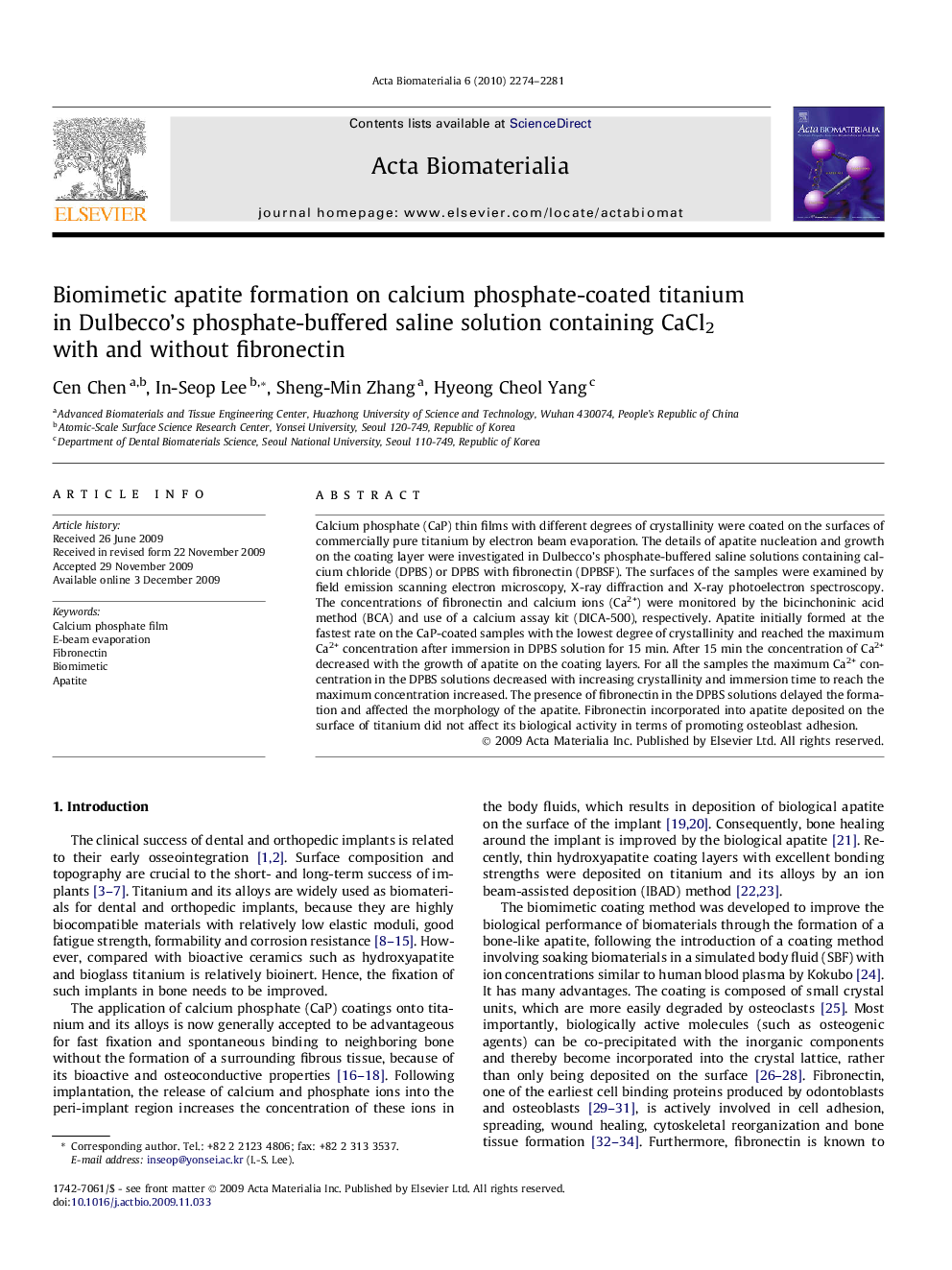| Article ID | Journal | Published Year | Pages | File Type |
|---|---|---|---|---|
| 1433 | Acta Biomaterialia | 2010 | 8 Pages |
Calcium phosphate (CaP) thin films with different degrees of crystallinity were coated on the surfaces of commercially pure titanium by electron beam evaporation. The details of apatite nucleation and growth on the coating layer were investigated in Dulbecco’s phosphate-buffered saline solutions containing calcium chloride (DPBS) or DPBS with fibronectin (DPBSF). The surfaces of the samples were examined by field emission scanning electron microscopy, X-ray diffraction and X-ray photoelectron spectroscopy. The concentrations of fibronectin and calcium ions (Ca2+) were monitored by the bicinchoninic acid method (BCA) and use of a calcium assay kit (DICA-500), respectively. Apatite initially formed at the fastest rate on the CaP-coated samples with the lowest degree of crystallinity and reached the maximum Ca2+ concentration after immersion in DPBS solution for 15 min. After 15 min the concentration of Ca2+ decreased with the growth of apatite on the coating layers. For all the samples the maximum Ca2+ concentration in the DPBS solutions decreased with increasing crystallinity and immersion time to reach the maximum concentration increased. The presence of fibronectin in the DPBS solutions delayed the formation and affected the morphology of the apatite. Fibronectin incorporated into apatite deposited on the surface of titanium did not affect its biological activity in terms of promoting osteoblast adhesion.
